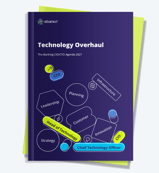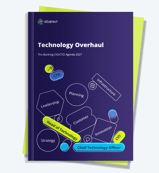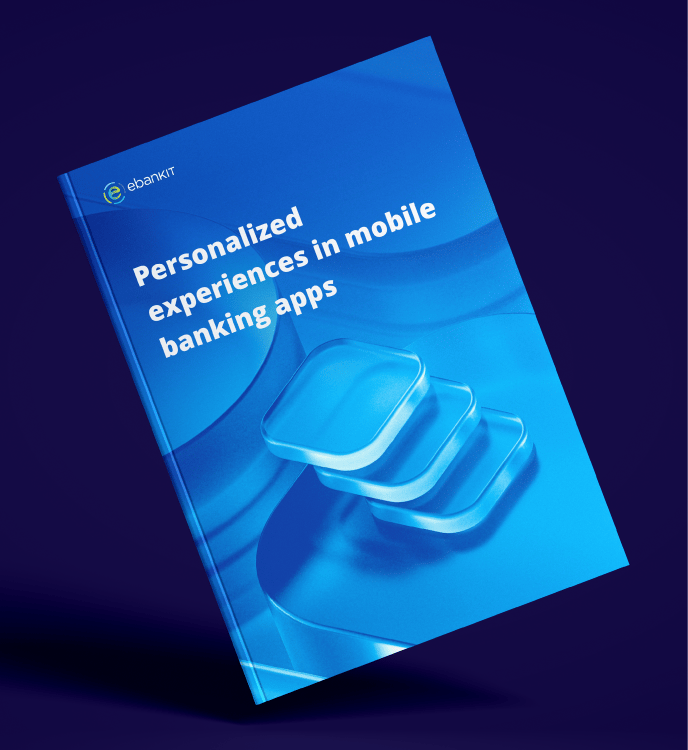Innovate to compete: building a next-level small business strategy
Recorded on May 9, 2025

SPEAKERS
SUMMARY
Learn how financial institutions can leverage AI-driven engagement and digital solutions to create tailored, tiered experiences that serve the diverse needs of small business account holders, from solopreneurs to mid-sized enterprises. Strengthen relationships, improve service, and drive loyalty and profitability within your business banking segment.
Key topics
Explore how your financial institutions can leverage AI to strengthen relationships with business clients.
Discover the best ways to provide personalized experiences that satisfy business clients and their needs.
Sharpen your digital banking strategy to support the full range of small businesses and set up for long-term success.
Transcript
00:00:00 - Introduction and overview of the session
The webinar begins with a welcome from Mary York, founder of York Public Relations, a PR agency specializing in financial institutions (FIs) and fintechs. Mary sets the stage by emphasizing the importance of driving digital engagement and growth for small businesses, which play a vital role in local economies. She stresses how banks must now prioritize personalized support and "branch-like" digital experiences for their business customers.
Then Mary introduces two featured guests. Matt Phipps, Chief Marketing Officer at Agent IQ, an AI-powered relationship banking platform. Matt focuses on helping FIs deepen customer relationships beyond physical branches by blending digital convenience with human connection. Then she introduces Paul Provenzano, head of U.S. operations at ebankIT, a digital banking provider known for innovation.
The discussion begins with insights from a recent survey of over 800 bank executives, revealing that 78% plan to increase fintech spending over the next two years. The panel explores the drivers behind this investment trend, particularly the push for digital transformation.
Matt notes that as competition grows—especially from new challengers—customer expectations are also rising. Consumers now expect the same seamless, tech-forward experiences from banks as they get in other areas of life. He explains that FIs have an opportunity to stand out from larger institutions by offering more tailored, customer-focused digital experiences that align with their own operating models.
00:05:00 - Main strategic drivers for financial institutions
Paul Provenzano expands on the earlier discussion, emphasizing that digital banking is now about much more than just enabling transactions. He outlines three main strategic drivers for financial institutions today.
1. Improving efficiency—both in the back office and for customers.
2. Creating revenue—through acquiring new customers or offering additional products and services.
3. Delivering differentiated digital experiences—to stand out in a competitive market.
He points out that with modern technology and a wide ecosystem of best-in-class providers, community-based FIs have more opportunity than ever to compete effectively with large, national institutions.
Mary York adds that according to the survey, 55% of respondents are prioritizing this kind of digital transformation—not just to digitize services, but to truly meet customer expectations for how they want to engage with their banks.
A key theme in this segment is the balance between digital innovation and human connection, especially important for community banks. The most forward-thinking FIs are not replacing people with tech—they’re using tech to empower staff and enhance customer relationships. Technology helps eliminate mundane tasks while enabling more meaningful interactions.
The panel emphasizes that "one size doesn’t fit all"—each institution must align its tech choices with its unique strategy, brand, and customer base. Rather than letting technology dictate strategy, banks should first define how they want to serve their customers, then use technology to enable more efficient, personalized service and better human touchpoints.
00:10:00 - Balancing in-branch with digital experiences
The discussion shifts to the importance of bridging the offline and online experience in banking. Paul Provenzano raises the question: How efficient are financial institutions at connecting the physical and digital worlds? He stresses that strategy—not just technology—should drive decisions. Forward-thinking FIs must look to brands like Starbucks, Amazon, or Uber as examples of seamless customer experiences. While banking is more complex and highly regulated, Paul argues that FIs can still blend digital automation with in-person service to deliver smooth, connected experiences.
Mary York supports this by referencing the research again: around 40% of bank executives said improving customer experience is a key reason behind their digital investments. It’s not about adopting technology for its own sake, but about serving a strategic purpose.
The conversation then turns to AI and data analytics. Mary notes the growing focus on using these tools not to depersonalize, but to strengthen relationships.
Matt Phipps explains that effective use of AI starts with clearly defining what problems FIs are trying to solve. AI excels at analyzing large amounts of data—but it doesn’t offer human empathy. That’s why the combination of AI's insights and the FI's human-driven relationship model is so powerful. AI can identify trends, suggest financial products, or flag opportunities to improve a customer’s financial situation, allowing staff to act with relevance and impact.
Paul adds that at the heart of any AI initiative should be the value it brings. For small business customers in particular, AI enables insights like cash flow analysis, invoice comparisons, and spending trends, which can greatly enhance decision-making. This adds real value, fosters customer loyalty, and deepens relationships with small business clients.
00:15:00 - Use cases of a successful hybrid model
The conversation now centers on how to execute a successful hybrid model—balancing digital efficiency with meaningful human interaction.
Matt Phipps illustrates this with a comparison between two fast food giants:
-
- McDonald’s: While they've embraced mobile orders and kiosks to increase efficiency, the lack of human interaction has hurt the customer experience. Employees are often focused only on operations, and customers are left without support when they need help—leading to frustrating, impersonal experiences.
-
- Chick-fil-A: In contrast, they've also invested in technology—but to streamline internal operations, not to replace people. Customers still interact with real staff, and that personal touch remains intact. Matt highlights that the key difference is balance, and customers tend to stay loyal to experiences that suit them best.
Paul Provenzano adds that this balance is essential because it directly reinforces a financial institution's brand identity—the experience reflects what the institution stands for.
Mary York brings in additional survey data, pointing out that local small to mid-size businesses are a growing focus for many banks. This creates a challenge: retail and business customers have different needs and expectations, and banks must serve both well.
She poses a crucial question: How can banks leverage AI and technology to serve customers who straddle both roles—retail and business?
The panel agrees that “one size doesn’t fit all.” For retail customers, AI can power self-service options that mirror the in-branch experience. But small business customers often have more complex needs—they value efficiency but also require empathetic, expert guidance. AI must be adaptable, offering the right level of automation and human support based on the customer segment and context.
00:20:00 - Drive loyalty and trust with technology
Paul Provenzano brings up findings from a Datos Insights report that identified the top 12 criteria small business owners value in a banking relationship. Among the top 3, two were technology-related, including services like accounting integration, invoicing, HR, and payroll—tools small businesses rely on daily. The #1 criterion, however, was still relationship, confirming that both human connection and technology are critical to winning and retaining SMB clients.
This leads to a key question: Do banks' small business offerings align with what SMBs actually need? Paul notes that traditional offerings—focused on basic accounts and transactions—often fall short. Small businesses want:
- Easy access to integrated accounting tools
- Visibility into cash flow and invoicing
- User-friendly dashboards for better financial oversight
This creates a big opportunity for financial institutions to innovate, repackage, and reposition their services. Because SMBs vary greatly—from solo entrepreneurs to mid-sized firms—banks must tailor offerings and consider how AI can be integrated across different service tiers.
Paul suggests that the ultimate opportunity for banks is to become the “digital front door” for small businesses—a centralized hub for all their financial and operational needs. Doing this successfully builds customer loyalty, which is vital since growth is a top priority for SMBs—and growth suffers when clients leave due to unmet needs.
The panel underscores that clients value convenience. When it comes to simple, repetitive tasks, AI is ideal—it provides quick answers without requiring a call or a branch visit. Many customers, especially younger ones, are happy to use self-service tools.
However, for complex issues—particularly in the SMB space—human support is essential. If banks can’t deliver that, clients will look elsewhere. The real challenge (and opportunity) is building a system where customers are efficiently guided to either self-service or human help, depending on their needs. That seamless path is what ultimately drives loyalty and trust.
00:25:00 - AI improves life for both customers and employees
The conversation now explores how AI not only benefits customers but also empowers banking staff.
Paul Provenzano highlights that AI helps banks by offloading routine, repetitive inquiries, such as “What is my account number?”—a top question staff receive. By handling these low-level tasks, AI enables staff to focus on higher-value, more complex interactions, improving both efficiency and employee satisfaction. When internal frustrations are reduced and staff feel supported, the overall experience improves for both customers and employees, boosting satisfaction across the board.
Mary York shifts the focus to the banks’ own growth goals. She notes that while business customers are focused on growth, banks are too—they aim to grow relationships, increase deposits, and acquire new customers. Their research, as reflected in the State of FinTech survey, repeatedly showed that the blend of superior digital experiences and personalized service is essential to achieving those goals.
The discussion underscores that the best way to grow is to avoid attrition. If banks can create loyal, satisfied customers, they don’t need to rely on promotional rates to attract or keep clients. Instead, they can build on their relationship-centric operating models, where value is delivered through personalized service and consistent support, not just pricing.
AI plays a key role here, especially through data analytics. It helps financial institutions identify relevant, timely opportunities to engage customers with personalized offers or solutions—improving both customer experience and revenue potential. Staff can more clearly see customer needs and respond proactively, which in turn opens the door to deeper wallet share.
Paul concludes this segment with what he calls the "e-commerce factor." Customers today are shaped by Amazon-like expectations—speed, simplicity, and one-click access. While banking is more complex and regulated, there's a real opportunity for financial institutions to mimic that seamless marketplace experience by creating a digital ecosystem where customers can access a wide range of tailored products and services quickly and easily.
00:30:00 - Create a smooth digital experience
The panel continues by emphasizing that financial institutions must create fully digital, seamless customer experiences, mirroring what consumers expect from e-commerce platforms. Especially for existing customers, every interaction—whether purchasing a new product or service, or onboarding—should be frictionless and fast. The more effortless the process, the more likely customers are to complete it, and more importantly, to repeat it. This is not just about selling—it’s about creating a repeatable and satisfying journey that deepens customer engagement and loyalty.
Paul Provenzano supports this by citing digital-first companies like Rocket Mortgage and SoFi. These fintechs have built end-to-end user experiences that begin from the very first interaction and continue cultivating the relationship throughout. They provide a template for how FIs can differentiate themselves by offering a consistently smooth digital experience.
At this point, the webinar shifts from theory to action.
The hosts introduce a live demo of the technologies from Agent IQ and ebankIT:
On the left side of the demo is the Agent IQ internal staff dashboard, used by bank employees. On the right side is the customer-facing interface, powered by ebankIT.
They roleplay a common scenario: a customer logs into their banking dashboard and needs help depositing a check. Rather than calling support or visiting a branch, the customer uses the integrated AI chatbot:
The chatbot allows the user to either click a relevant menu option or type a question like “How do I deposit a check?
The system instantly provides step-by-step guidance, showcasing how AI handles simple, repetitive tasks efficiently.
This example reinforces the earlier point: AI empowers customers with self-service for routine needs, reducing strain on call centers and freeing staff to focus on high-value interactions. The goal is to deliver fast, effective support, while enabling FIs to scale personal service in a digital environment.
00:35:00 - Blending AI with an human touch
The webinar demo continues with a more complex scenario to illustrate how AI and human support work together seamlessly:
A customer named Jose has a concern—he’s got a new phone and wants to make sure his old device is no longer linked to his bank account for security reasons. After initially using AI-powered self-service, he’s connected to a live bank staff member, Lana, for further assistance.
On the staff dashboard (Agent IQ), Lana receives the incoming question flagged with prior conversation context, so she’s immediately up to speed.
She uses AI tools to quickly generate steps for Jose to deactivate the old device.
Jose can view and follow the instructions without losing the chat window, even if he navigates to other pages—making the experience intuitive and efficient.
This interaction shows how AI supports both customer self-service and enhances staff productivity, improving the overall customer experience and internal efficiency.
The demo continues with Jose switching roles—he’s also a business owner and needs to manage his corporate accounts while his account administrator is on vacation.
Without needing to go to a different site, he switches from his personal to his business profile directly within the banking platform.
Once switched, he gains access to all his corporate account features, including pending transactions requiring his attention.
The system is already configured with security rules like OTP authentication for large transactions, allowing him to securely and swiftly authorize a payment.
This example highlights the power of a unified digital banking platform—users can effortlessly transition between personal and business banking, complete important tasks, and stay secure, all from one login. The integration of AI, staff assistance, and customizable workflows provides a modern, seamless banking experience tailored to complex customer needs.
00:40:00 - A smooth business banking experience
Jose, now managing business banking tasks usually handled by his administrator, confirms a payroll transaction was successfully processed. He then needs to quickly onboard a new accounting administrator before the current admin returns. Switching to his business account, Jose accesses support, which recognizes his ongoing relationship with the bank.
Using integrated live chat and optional video or screen sharing, a bank staff member guides Jose step-by-step to add a new user (John Smith) as an administrator. Through highlighted prompts and predefined workflows, Jose successfully completes the setup. He is then walked through assigning John to the appropriate user group—specifically the accounting group—with permission controls to restrict access to only Valtech-related accounts. This scenario showcases a seamless blend of AI, live support, and personalized service that empowers clients to manage complex tasks confidently, even when outside their expertise.
00:45:00 - Tailored support for businesses
In this segment, Jose accesses the accounting group settings to verify and update user permissions, ensuring they apply only to specific accounts rather than all business units. This quick adjustment showcases how easy and self-sufficient the system is for managing permissions.
After this, the client returns to the main online banking dashboard and inquires about the bank’s small business loan program. Soren, maintaining a helpful and cheerful demeanor, brings in Brooke, a subject matter expert in small business lending. Brooke joins the live conversation seamlessly—without any need for transfers or delays—and provides tailored support and information in real time.
The conversation concludes with Brooke and Soren discussing potential next steps, which could include further chat-based dialogue or document exchange. The overall goal of the demo is emphasized: to show how technology enhances the banking experience by connecting personal and business relationships, enabling timely human and AI-driven support, and reinforcing strong client-bank relationships.
00:50:00 - Customer relationships and strategic use of technology
This portion focuses on the importance of relationships and strategic use of technology in financial services. The speakers emphasize that the personalized experience shown whether for mortgages, wealth management, or small business, can be extended across all areas of a financial institution.
Relationships as differentiators: How you engage clients—through AI, self-service, or human support—must align with your strategy and be tailored to customer needs.
Integrated, seamless technology: Switching between personal and business banking without friction is crucial for a great user experience.
Strategy-driven tech adoption: Technology should support business goals, not just add complexity. Integrated platforms enable relationship banking across all lines of business.
Cultural alignment: Institutions should partner with fintechs that share a client-centric, proactive service mindset.
API-first infrastructure: The ability to integrate easily and scale is vital, and APIs are foundational to that.
Ultimately, they stress that technology should enhance—not replace—the human connection, helping banks offer differentiated, relationship-based digital experiences.
00:55:00 - Concluding thoughts
The webinar concludes with a key reminder: there is no one-size-fits-all solution in digital banking, especially for small businesses. Financial institutions should look for flexible, modular technologies that can adapt to their unique workflows and long-standing operational models.
The speakers emphasize that the right technology should augment existing practices, not force institutions to conform to rigid systems. The session wraps with thanks to the audience and a reinforcement of the main message: technology should support strategy, enhance relationships, and remain adaptable to individual business needs.




%20without%20SAM%20-%20Maturity%20Level%20-%202-KO%20edit.webp?width=160&height=57&name=67768-ebankIT%20Platform%20-%20CMMI%20Development%20V2.0%20(CMMI-DEV)%20without%20SAM%20-%20Maturity%20Level%20-%202-KO%20edit.webp)
